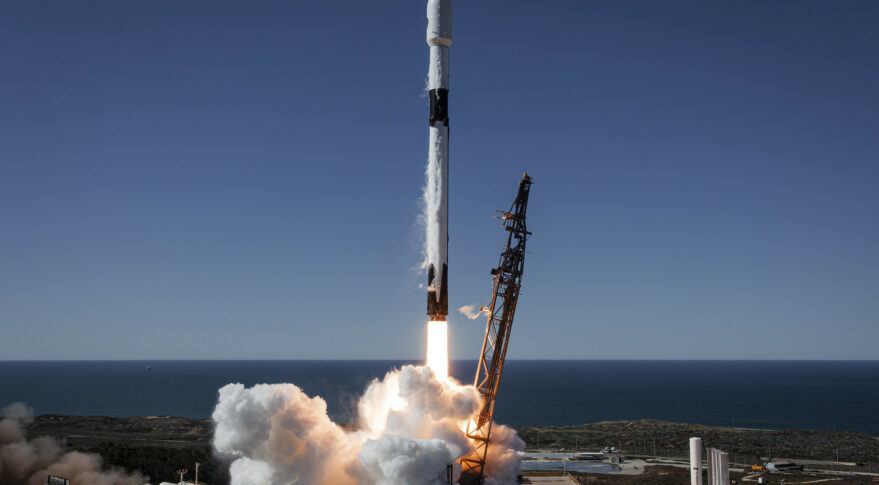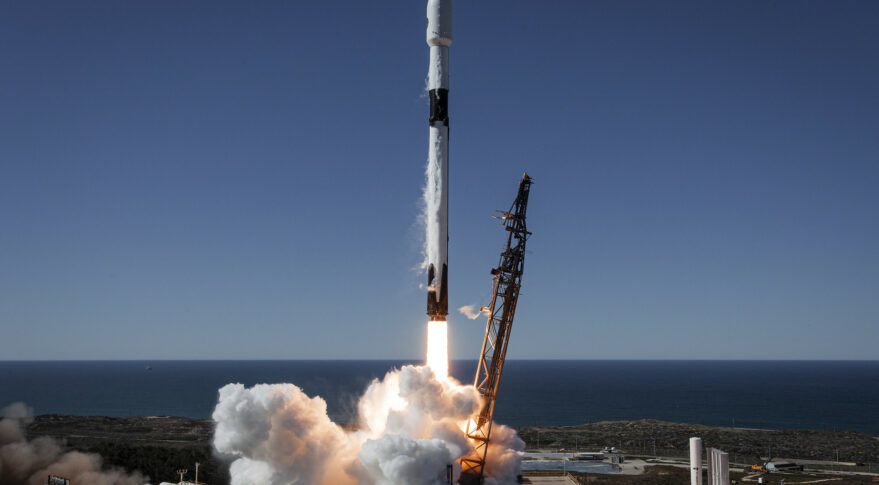
WASHINGTON – The National Reconnaissance Office’s NROL-85 mission launched April 17 by SpaceX was originally scheduled to fly from Cape Canaveral, Florida. But just 12 months before the launch, the NRO informed SpaceX it needed to send its payload to a different orbit so the launch had to be moved to the western range at Vandenberg Space Force Base, California.
“This was a challenge,” NROL-85 mission manager Maj. Jonathan Schirner said this week on the NRO’s “The Dish” podcast.
National security space launch missions are rarely, if ever, moved from coast to coast on such short notice, Schirner said. “It’s the first time we’ve done a range change at the 12 month mark in the NSSL timeframe.”
Typically it would be hugely expensive for the government to switch ranges like that because NSSL missions are planned two years in advance and SpaceX in this case had already started integration work at the Cape, Schirner said.
The NRO and SpaceX worked out a deal to move NROL-85 to the West Coast at no extra cost to the government and in exchange the NRO agreed to fly the mission on a reused first stage that had previously flown another NRO mission.
Under the agreement, SpaceX would launch NROL-87 in February at Vandenberg and reuse the boost for NROL-85 in April. Schirner said the deal also was possible because the Space Force’s Space Systems Command was able to examine the recovered booster and approve it for reuse in just two months, a much shorter than usual turnaround.,
NROL-87 was the first NRO launch of a SpaceX Falcon 9 rocket intended to be reused for a future mission.
Schirner said a lot of effort and coordination went into the relocation of NROL-85. “About 12 months ago, the director of the NRO decided that in order to preserve the opportunity to optimize the orbit, that we would change ranges to Vandenberg because you can hit both of the orbits that he was looking at,” he said.
NRO spacecraft are classified and the agency does not disclose what payloads it launches in national security missions. Satellite tracker Ted Molczan told Spaceflight Now he believed NROL-85 carried a pair of maritime surveillance satellites.
The use of a previously flown booster was “part of the renegotiation for the contract to get us to the West Coast,” Schirner said. “The reused booster was in that contract mod. And that really was an offset to a lot of the integration work that has already been done at the Cape.”
“By using a reused booster, we were able to move coasts, and we didn’t have to spend a dollar to do it,” he said. Under most circumstances, the government would have had to pay the contractor for the integration work that had already been done, he added. “So I think that when we talk about benefits of a reused booster, we’re talking about taxpayer savings on one end but specifically on this mission, we were able to get a priority of the director of the NRO done while spending zero taxpayer dollars to do it.”

